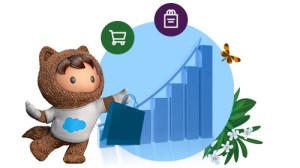After a shaky recovery in 2021, the fragile global economy has been hit by several shocks, including higher-than-expected global inflation, particularly in the United States and major European economies. In fact, inflation in the US hit 8.6% in May, the highest since December 1981.
The worse-than-expected slowdown in China, a continuing pandemic and the costly Russia-Ukraine conflict are some key factors contributing to global inflationary pressures. When combined with rising food and energy costs, and persistent supply chain disruptions, it is no wonder the global inflation rate has been revised upwards for this year. It is now predicted to be 6.6% in advanced nations and 9.5% in emerging markets and developing economies.
In India, both retailers and consumers in India are feeling the pinch of inflation. The retail inflation rate in India stood at an eight-year high of 7.79% in April. While it did come down to 7% in August, this is still much higher than the Reserve Bank of India’s (RBI) upper tolerance level of 6%. And this inflationary trend is expected to persist for a few more months or even a year. While the RBI is taking appropriate measures to rein in inflation, these efforts will take time to yield results.
What does a high inflation rate mean for retailers?
In an inflationary environment, consumers are more concerned about paying off debt and covering everyday costs rather than splurging on discretionary products. Naturally, this is bad news for most retailers since it will ultimately lead to lower sales and challenges with inventory forecasting. Simply put, the biggest concerns for retailers are slowing sales growth, compressed margins, and increasing expenses.
Retailers would do well to accept this reality and look for ways to manage rising operational costs, optimise supply chains, innovate to increase revenues, and offer an engaging customer experience. Retailers can transform these difficulties into opportunities by making bold and thoughtful decisions. In fact, businesses that do very well during recessions typically outperform their competitors over the ensuing ten years.
Here are six ways in which retailers can ride the inflation wave to their advantage:
1. Relook at consumer segments and brand messaging
Re-examine your core customer groups and look for changes in shopping patterns, such as variations in frequency, spending, and quantity bought in these segments. Identify whether customer needs have changed and how this has impacted the loyalty of important customer segments. Then, use this new customer understanding to relook at your customer strategy. Should you categorise customers in new ways, such as value-seeking or price-sensitive? Should you emphasise any brand promise, such as ‘the best rates in town’?
Next, deploy a unified customer data platform that can help understand your consumers at a granular level. Using micro segments, deploy extensive personalisation in messaging. Study the customers’ purchasing history, behavioural data, intent signals and messaging preferences to tailor your messaging accordingly. These timely and relevant messages help maintain customer relationships in difficult economic times, strengthen existing ones, and foster future consumer loyalty.
2. Constantly revisit the category strategies
Budgets and product accessibility make consumers more open to experimenting with new brands. For instance, national brands are recognised and generally preferred by consumers, but store-level labels (private brands) can be seen as cheaper alternatives during inflationary times. Retailers will need to reconsider and modify the tactics employed in each category. In times of increased retail inflation, there is a need for strategies that emphasise reduced prices and additional value provided by such products to consumers. This can favourably influence consumer attitudes.
Plus, to enhance value perception and reduce costs, replace more expensive branded goods (or products that become unavailable due to commodity shortages) on your shelves with entry-level products from economical suppliers. This simplifies options for customers and increases value perception.
3. Understand where NOT to raise prices
To balance rising business costs with declining sales and also ensure customer loyalty, it is essential to manage price hikes in a targeted way. Instead of broad product price increases across all categories, tailor it to particular consumers and product segments depending on category margin performance and customer price sensitivity.
First, conduct a key value item (KVI) analysis to identify the products that your customers value the most. These are the goods on which you must not raise prices. After identifying KVIs, increase prices on less elastic products. This strategy aids in financing the expenditure on truly crucial, perception-driven goods. You get brownie points in the customer satisfaction area since your customer isn’t paying more for the goods they love, and you can also adjust your profit margins on the other background products.
4. Use integrated sourcing tools to increase cost visibility, boost purchasing power
Retailers need to determine the true impact of changes in input costs and where they differ from supplier-proposed pricing. Innovative sourcing tools can help in improving cost visibility. This will help retailers establish cost targets for each product, gain real-time visibility into the impact of inflation on end prices, and make quick adjustments where needed.
Retailers must balance anticipated price rises with the cost of financing and carrying extra inventory. They must also take into account the dangers of excessive overstocking and entering into long-term service contracts. Tools using predictive analytics, AI, and ML study previous sales figures along with external data such as macroeconomic factors to forecast demand, supply constraints, and material price increases. This helps businesses prepare for fluctuations and determine the material quantities required for the next few months.
5. Rethink store operations to optimise productivity
Look for strategies to increase your store’s productivity and efficiency to offset salary increases. How can you achieve more with fewer workers? Where do you need more skilled people?
By analysing your current in-store processes and taking an end-to-end view of expenses, you can identify opportunities for cost savings and productivity improvement. An easy way to do this? By leveraging automation and technology to handle straightforward data entry chores currently done by retail employees. This helps save the time and effort of employees, letting them focus on more strategic tasks.
Additionally, remember that the turnover of skilled staff can prove to be equally costly. Thus, it is necessary to also make investments in frontline employee experience and retention. Augmenting physical stores with a digital sales channel for both end consumers and B2B customers and establishing a true omnichannel experience can further enhance productivity and sales.
6. Employ end-to-end solutions to enhance supply chain visibility
With in-depth visibility into supply chains, retailers can reorient their supply and distribution networks. This lets them direct shipments through less congested and more affordable ways, locate distribution centres in the most suitable places (that can balance labour and last-mile costs), and take steps to lower distribution overhead.
So how can retailers ensure such an optimised supply chain? By leveraging an end-to-end data management tool, which helps monitor every stage of the supply chain, gather relevant data, and organise it in a centralised repository. From there, the data can be reviewed, analysed, and eventually mined for useful information that will enhance business operations and strategic decision-making.
One thing is clear, to beat the impact of rising inflation and changes in consumer purchasing patterns, retailers need data and tech-based tools to make sense of this data. Technologies using data and analytics help provide deeper insights through a holistic market view, letting retailers modernise processes, provide better customer experiences and enhance retailer-supplier collaboration.
Navigate retail inflation successfully with Salesforce: Realise greater efficiency in 2023 and beyond
Tackle inflation effectively by leveraging the power of solutions such as Salesforce CRM Solution for Retail. With this solution, you can understand changing customer preferences in real time, pay attention to what they want, and act quickly. CRM for Retail links partners, employees, and associates with essential data and tools they need to create scalable, personalised journeys.
Helping you deliver the right offer to the right customers on the right channel and at the right time increases shopper conversion. Plus, you can empower your employees to work more productively, engage with empathy, and scale loyalty-building customer service.
Want to reduce inflationary pressures, unlock cost savings and operational efficiency?
Salesforce CRM Solution for Retail. Learn more.




























